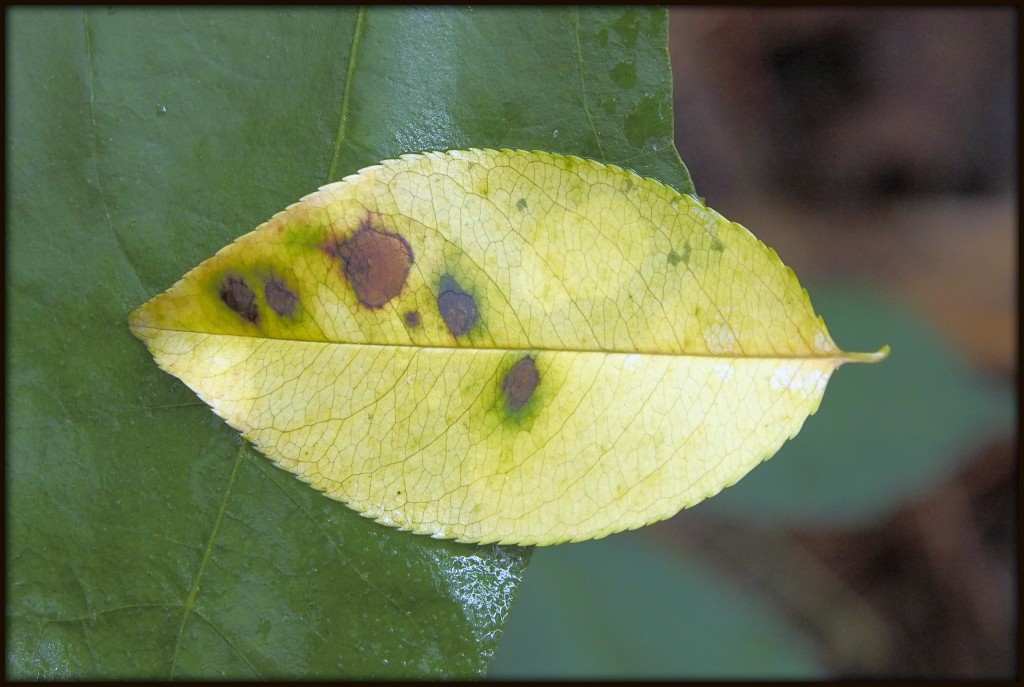Field guides to edible wild plants leave the reader imagining that the supermarket might be largely unnecessary. Could it be possible, in fact, to meet one’s dietary needs through foraging in the backyard and in nearby wild areas? There are, in fact, many plants with edible, and even tasty, parts: fruits, nuts and seeds, stalks and leaves, and even roots and tubers. But there are a lot of obstacles to moving to a wild foods diet.
One obstacle that should be of concern right away is the matter of safe and legal access to such plants. Most parks and nature centers frown on anything more than an occasional snack on wild blackberries, particularly if an entire plant must be uprooted in the process. While roadsides can offer many tempting plants, one should avoid eating anything growing within a few dozen feet of a highway, as the plants may be contaminated by vehicle emissions or other substances carried in runoff.
Another obstacle is correct plant identification. This one also cannot be overstated, since some poisonous plants look very similar to edible ones, and the similarities can be even greater (along with the hazards) for those considering foraging for mushrooms as well. For this reason, at least one (and preferably several) reliable field guides to edible plants are strongly recommended. The author will review several options in a later article.
Another obstacle is seasonality. Most fruits have to be ripe in order to be eaten. Many greens, on the other hand, are best consumed early in the year, as they become more bitter once the plant has begun flowering. Finally, nuts and seeds tend to be available only in the autumn. Some of the best options for the novice forager are plants such as the common cattail (Typha latifolia) that have multiple edible plant parts that can be consumed over the course of a growing season.
The fourth, and perhaps ultimately most daunting, obstacle is food preparation. Greens from a garden usually require washing, chopping, and perhaps a light steaming. Wild greens, on the other hand, can take a lot more work, and usually for a much smaller yield. One of the author’s favorites to tell would-be foragers about is the stinging nettle (Urtica dioica), a fairly common plant in parts of the United States and Europe, though found in only two counties here in Georgia. The stinging nettle gets its name from the formic acid in hairs that cover the leaves. Touching those hairs causes a stinging sensation that can last for hours or even longer. Anyone crazy enough to try to eat one of the leaves would risk having their throat seize up, leading to death. But, if the formic acid is neutralized by cooking the leaves briefly, they can be eaten with impunity, and even delight.
An obvious place to begin foraging efforts is the backyard, providing it has not been treated recently with pesticides or herbicides (whose considerable harm to local flora and fauna as well as nearby streams and rivers could be the topic of many an essay). The author has already harvested a couple of wild foods from his year, but just conventional ones: muscadines (wild grapes) and blackberries. But he is a novice at foraging for local greens and roots.
A prominent bull thistle (Cirsium vulgare), a common roadside weed from Europe, seemed like a good place for this author to begin. It was accessible, easily identifiable, and its consumption (should the venture prove a success) would not be an ecological tragedy (though it should be noted that thistle flowers do make excellent nectar sources for butterflies, while goldfinches eat the seeds). Root vegetables should be harvested between late summer and early spring, so the roots were out. Since the thistles were already flowering, it was not the ideal time for eating the leaves either, but the author decided to persevere anyway. He also sampled a stalk of a flower that had not yet come into bloom, for the sake of variety.
That said, preparation was not a simple task. The leaf had many sharp thorns, all of which had to be peeled away. The result, after about four minutes of work, was a slender midrib perhaps three inches in length. It tasted fairly good, with a slightly salty edge and a crisp crunchiness, and with no bitterness at all. About fifty of them would make a substantial salad, provided one has the three hours or so necessary for the task. Peeling the flower stalk was much faster and easier, taking under a minute. It was slightly more substantial and a bit longer (perhaps four inches), with a crisp, lettuce-like flavor. Again, forty or fifty of them would suffice for a side dish to a meal; however, the two thistle plants in the immediate backyard had one young flower stalk apiece, which suggests that another 38 plants would have to be located.
Why, then, bother with foraging for wild edible greens at all? Partly there is the temptation, as a naturalist, to experience plants with all the senses, rather than merely viewing them and occasionally smelling a flower in bloom. There is also the fact that wild plants tend to have a much greater content of vitamins and minerals than their domesticated counterparts, and could be an advantageous addition to the diet. They are also organic, free of pesticides and herbicides. Then there is the fact that the wild plants are free (if one neglects the processing time, that is), which can be a further temptation in our present economic situation. But mostly, from this author’s point of view, it is tempting to search for new wild edibles because of the stories that can be told about the quest. After all, how many people can claim to have eaten a thistle?
This article was originally published on May 2nd, 2010.



